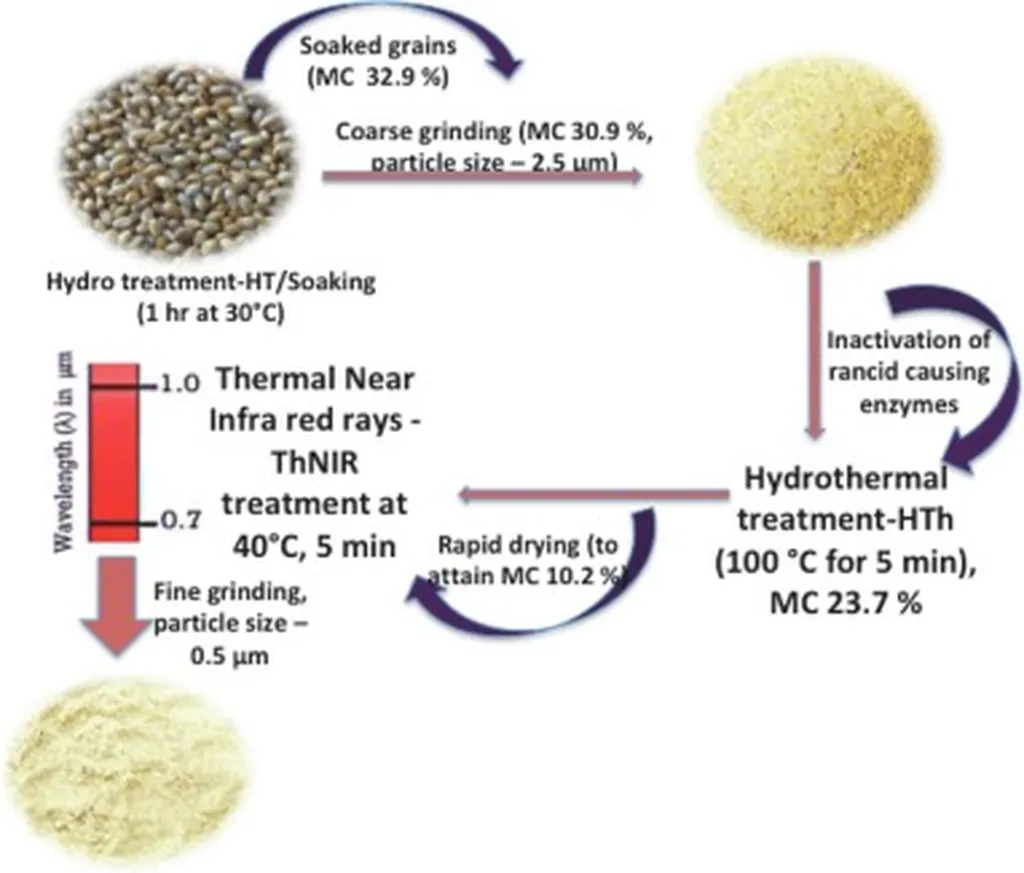In the quest to extend the shelf life and market potential of pearl millet flour, a team of researchers led by Ranjeet R. Kumar from the Division of Biochemistry at ICAR-Indian Agricultural Research Institute in New Delhi has made significant strides. Their study, published in *Frontiers in Nutrition* (which translates to “Frontiers in Nutrition” in English), employs advanced metabolomics and biochemical approaches to unravel the intricate mechanisms behind rancidity in pearl millet flour, offering promising avenues for improving its quality and longevity.
Pearl millet, a nutritional powerhouse, often falls short of its full market potential due to rancidity, a process that significantly limits its shelf life. The study focused on two cultivars—Pusa-1201, a hybrid variety, and Chadhi Bajri, a landrace—revealing stark differences in their susceptibility to rancidity. Using untargeted LC–MS profiling, the researchers identified pronounced metabolic alterations in stored flour of Pusa-1201, including elevated levels of lipid degradation products and free fatty acids. In contrast, Chadhi Bajri exhibited unique antioxidant and stress-protective metabolites, indicating a greater resistance to oxidative degradation.
“Our findings highlight the critical role of specific metabolites in the rancidity process,” said Ranjeet R. Kumar, the lead author of the study. “By understanding these metabolic shifts, we can develop targeted strategies to enhance the stability and utilization of pearl millet flour in processed food products.”
Enzymatic assays conducted as part of the study showed a storage-dependent increase in lipase, lipoxygenase, peroxidase, and polyphenol oxidase activities, particularly in Pusa-1201. These activities correlated strongly with rancidity indices such as acid value (AV), peroxide value (PV), and free fatty acid content (FFA). Multivariate statistical analyses, including PLS-DA, VIP plots, and heat-maps, further highlighted discriminatory metabolites contributing to rancidity progression and oxidative stress.
The research identified a set of 25 metabolites, including phytol, ethanolamine, chlorophyllide b, and glucoside derivatives, as key biomarkers of rancidity. These insights pave the way for developing metabolite-based sensors to assess rancidity behavior across diverse pearl millet accessions. Moreover, the information can be used to develop technologies for enhancing flour’s stability and utilization in processed food products.
The commercial implications of this research are substantial. By extending the shelf life of pearl millet flour, food manufacturers can reduce waste, improve product quality, and expand market reach. This is particularly relevant in regions where pearl millet is a staple crop, offering economic benefits to farmers and processors alike.
As Ranjeet R. Kumar noted, “This research not only advances our scientific understanding but also opens up new possibilities for the food industry. By leveraging these findings, we can develop innovative solutions to address the challenges of rancidity and enhance the overall value of pearl millet-based products.”
The study’s findings were published in *Frontiers in Nutrition*, a renowned journal that translates to “Frontiers in Nutrition” in English, underscoring the global relevance and impact of this research. As the agricultural and food industries continue to evolve, such scientific advancements will play a pivotal role in shaping the future of food production and processing.

